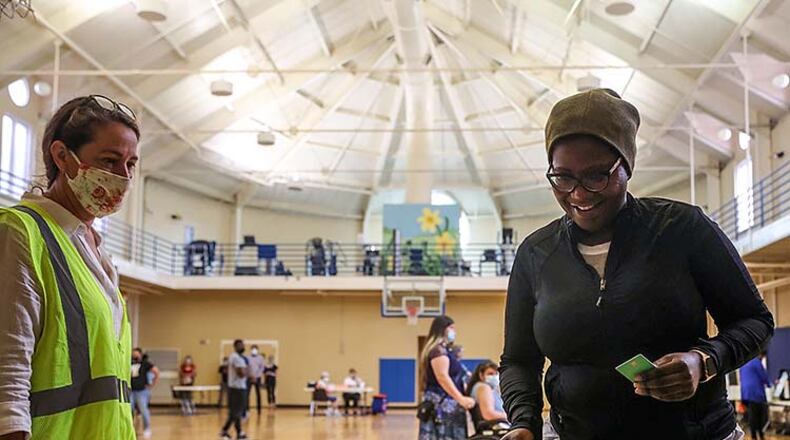Cobb election officials are continuing to count tens of thousands of mail-in ballots from the June 9 primary, a process that is expected to run through Friday.
In an email, Cobb Elections Director Janine Eveler cautioned, “This is no longer a one night operation with the increase in mail ballots.”
It is not possible to say what percentage of the vote has been counted. Cobb has yet to provide the total number of mail-in ballots or votes cast in person on election day, with all but one precinct fully reported as of Wednesday afternoon.
County officials had previously said that they had processed about 20,000 out of 90,000 mail-in ballots. Later, Cobb spokesman Ross Cavitt said the total number of mail-in ballots would be revised upwards to include ballots collected from drop-boxes Tuesday night. He did not immediately provide a new total, however.
Elections workers are also auditing an unknown number of provisional ballots, he added.
The unprocessed votes cast a cloud of uncertainty over key local races.
Current, unofficial results are based on in-person ballots cast on or before election day, as well as 20,000 of an unknown number of mail-in ballots.
Based on those early, incomplete results, incumbent Commission Chairman Mike Boyce appeared to have pulled ahead of his two Republican challengers, setting the stage for a showdown with Democrat and fellow commissioner Lisa Cupid in November.
In the sheriff’s race, three Democrats--Craig Owens, Gregory Gilstrap and James Herndon--are competing for a chance to face off against incumbent Sheriff Neil Warren.
Owens was leading but none of the three candidates had reached the 50 percent of votes required to capture the nomination outright.
In the District 2 East Cobb commission race, Fitz Johnson was leading but still short of 50 percent. The race for second remained very close.
In the District 4 South Cobb commission race, where seven Democrats were running to replace Cupid, no one was close to capturing 50 percent. As of Wednesday, Shelia Edwards and Monique Sheffield were the front runners for a potential runoff.
About the Author
The Latest
Featured

